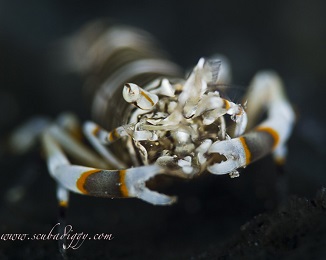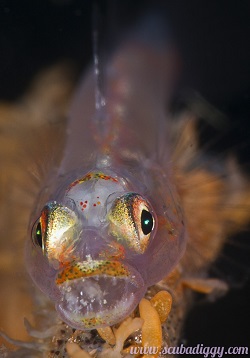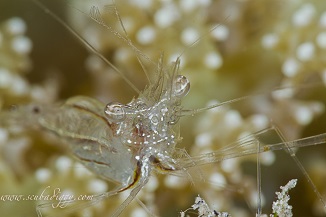Loading content - please wait...
Bokeh Effect in Underwater Photography
Bokeh can help underwater photographers achieve dramatic effects.
The Blur Effect

The term bokeh comes from the Japanese word meaning blur. In ordinary photographs both object and background are in focus. The bokeh effect relies on blurred background. Only the object is in sharp focus.
Beginning underwater photographers are happy when everything in a photo is in focus. They are happier still if the color is good. Bokeh is an advanced technique. It concentrates on having only the foreground object in focus. The background is deliberately blurred. With this technique a simple id shot becomes dramatic.
Bokeh in Underwater Photographs

Many shrimps, crabs and fish rely on camouflage. Others have transparent bodies. Both of these help blend the creature into its environment. Being unseen means safety. However, the underwater photographer wishes to shoot those creatures in ways that they can be seen. Their unseen beauty is better recognized using the bokeh technique. Otherwise, the creature still remains obscured by its environment. Typically, only the eye or the face of a marine creature is in focus. The rest of its body remains out of focus. Its living space, whether crinoid or coral, is also blurred.
Three among Miguel’s Diving staff have placed in international underwater photo competitions. That means we know how to help guests get better photos. Underwater bokeh photos for this blog are courtesy of Mr. Digant Desai of Bombay, a repeat guest of Miguel’s Diving. All photos were shot in Gorontalo.
Technical Tips
The bokeh effect relies on a sharp foreground object and blurred background. Here are several tips. Manual settings must be used, not automatic ones. First, select the smallest F-number available. This will decrease the depth of field and isolate focus on only a small part of the frame. Take a shot to check results.
Second, use the zoom feature on your camera. This will further isolate the focus on the desired object. Take another shot and adjust.

Third, move as close as possible to the object. When shooting underwater, this can be challenging. Some marine creatures think their camouflage is working. They will not move. Others can become afraid and flee when a photographer gets too close. That is why the zoom should be used before getting closer. Moving closer also requires patience. Once marine life discovers that you mean no harm, approach is easier.
Fourth, certain macro lenses can achieve better bokeh effects. This will depend on the make and model of the camera used. There is one caution to note. Simply using a computer program to make a close crop of an object will not achieve the bokeh effect. The background must be blurred at the time the photo is taken.
For your chance to shoot pictures using the bokeh effect in Gorontalo, please book your dive trip with us.





